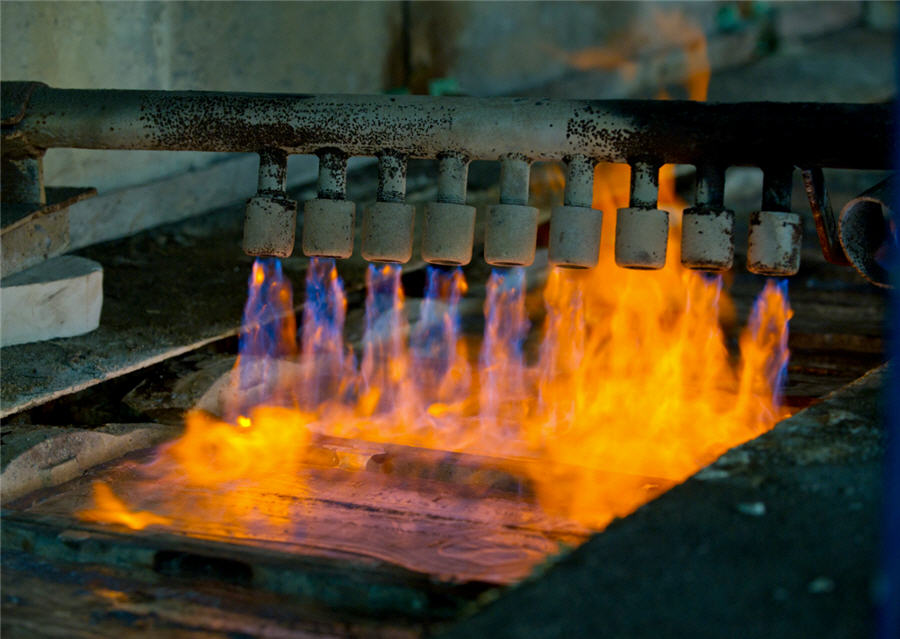
Belgium’s Nyrstar is reactivating the Budel zinc smelter in the Netherlands after a four-month period of care and maintenance.
The company, controlled by global trade house Trafigura, said improved market conditions and the reinstatement of a Dutch energy cost assistance scheme will allow the plant to restart later this month, albeit not at full annual capacity of 315,000 metric tons.
It is the second European smelter to come out of care and maintenance this year after Glencore re-fired its 165,000-ton-per year Nordenham smelter in Germany in February.
The zinc market seems to have taken the news in its stride. London Metal Exchange (LME) three-month metal hit a 13-month high of $2,974 per ton on Tuesday. It is currently trading just shy of that level at $2,880.
Zinc is being buoyed by the broader flow of investment money into the base metals sector. But the zinc narrative has also changed with focus shifting from smelter constraints to mine supply issues.
Smelter treatment charges have collapsed this year, signalling a squeeze on the availability of mined concentrates.
This year’s benchmark terms were set at $165 per ton, down from $274 in 2023. That is already looking generous to smelters. Spot terms for Chinese import delivery have slumped to $30-50, the lowest since 2018, according to price reporting agency Fastmarkets.
This is the culmination of two years of falling mine production. Global mine output shrank by 2.3% in 2022 and by another 1.2% in 2023, according to the International Lead and Zinc Study Group (ILZSG).
The Group’s latest forecast is for mine supply to improve this year but only by a marginal 0.7% and largely thanks to the ramp-up of the 250,000-ton-per year Kipushi mine in the Democratic Republic of Congo.
Constrained raw materials supply will act as a brake on refined production growth this year, according to ILZSG, which now expects metal supply to grow by just 0.6% this year, compared with forecast growth of 3.3% when the Group last met in October.
The sharp downgrade to global output explains why ILZSG has cut its expected supply surplus for 2024 from a glut of 367,000 tons to a much more marginal 56,000 tons.
ILZSG’s rethink about mine supply and the sharp cut in forecast surplus mirror the latest forecasts from sister organization the International Copper Study Group.
There is, however, a key difference between the two metals.
Copper’s mine supply woes have largely been due to operational constraints or, in the case of the closed Cobre Panama mine, a supreme court mandate.
Most of the zinc mines that have shut down over the last year or so have done so in large part due to price.
The LME zinc price slumped from a record high of $4,896 per ton in March 2022 to a low of $2,215 in May 2023, leaving a trail of price casualties in its wake.
However, the recent rally means that prices are now trading around $400 per ton above the 90th percentile cost of production, according to analysts at Citi.
Every mine has its unique cost configuration and for some price alone may not be enough, but the higher the price travels, the greater the potential for restarts.
Swedish producer Boliden, for example, has been negotiating with unions at its Tara mine in Ireland on a new contract that would pave the way for resuming operations after a year of inactivity.
The results of a ballot of union members are due on Friday, according to local news sources.
The price has already voted.

ILZSG estimates European zinc mine production fell by 6.2% in 2023 and is forecasting another 7.9% slide this year due to the closure of Tara and the Aljustrel mine in Portugal.
If Boliden gets its union agreement at Tara, that will change just as the restart of the Budel and Nordenham smelters changes refined metal dynamics, particularly in Europe.
Zinc fundamentals are currently highly fluid.
So is fund positioning on the London market.
Investment funds were collectively net short of zinc as recently as February, when the LME price was still below $2,500 per ton.
They were net long to the tune of 27,036 contracts at the close of last week. Outright long positions of 59,391 contracts are the highest they’ve been since June 2022.
Investor bull positioning is still modest by comparison with some of other base metals such as copper, which has stronger energy transition credentials.
It is also likely to be more volatile simply because zinc’s fundamental landscape is shifting so fast.
(The opinions expressed here are those of the author, Andy Home, a columnist for Reuters.)
(Editing by Christina Fincher)
Comments